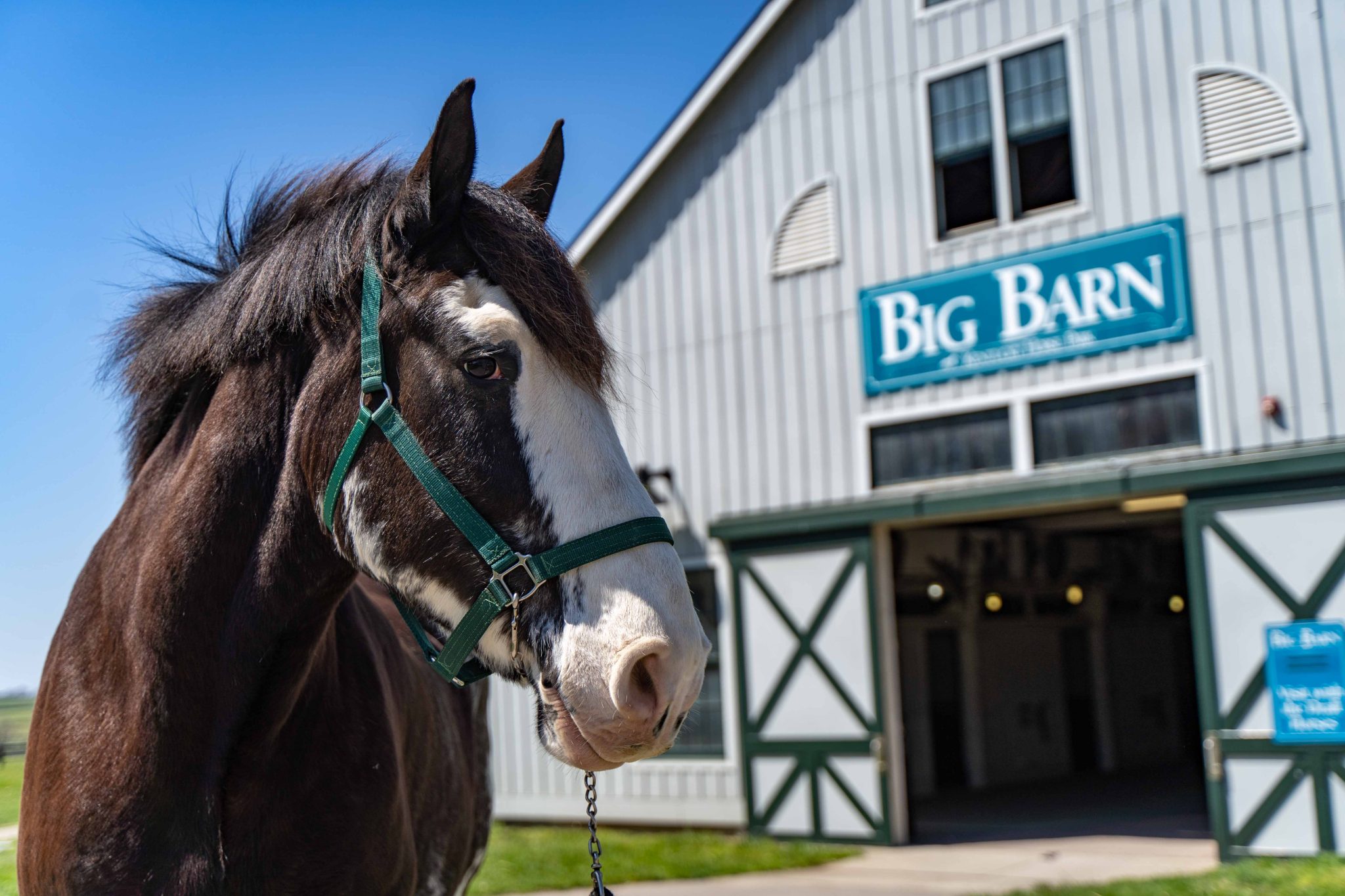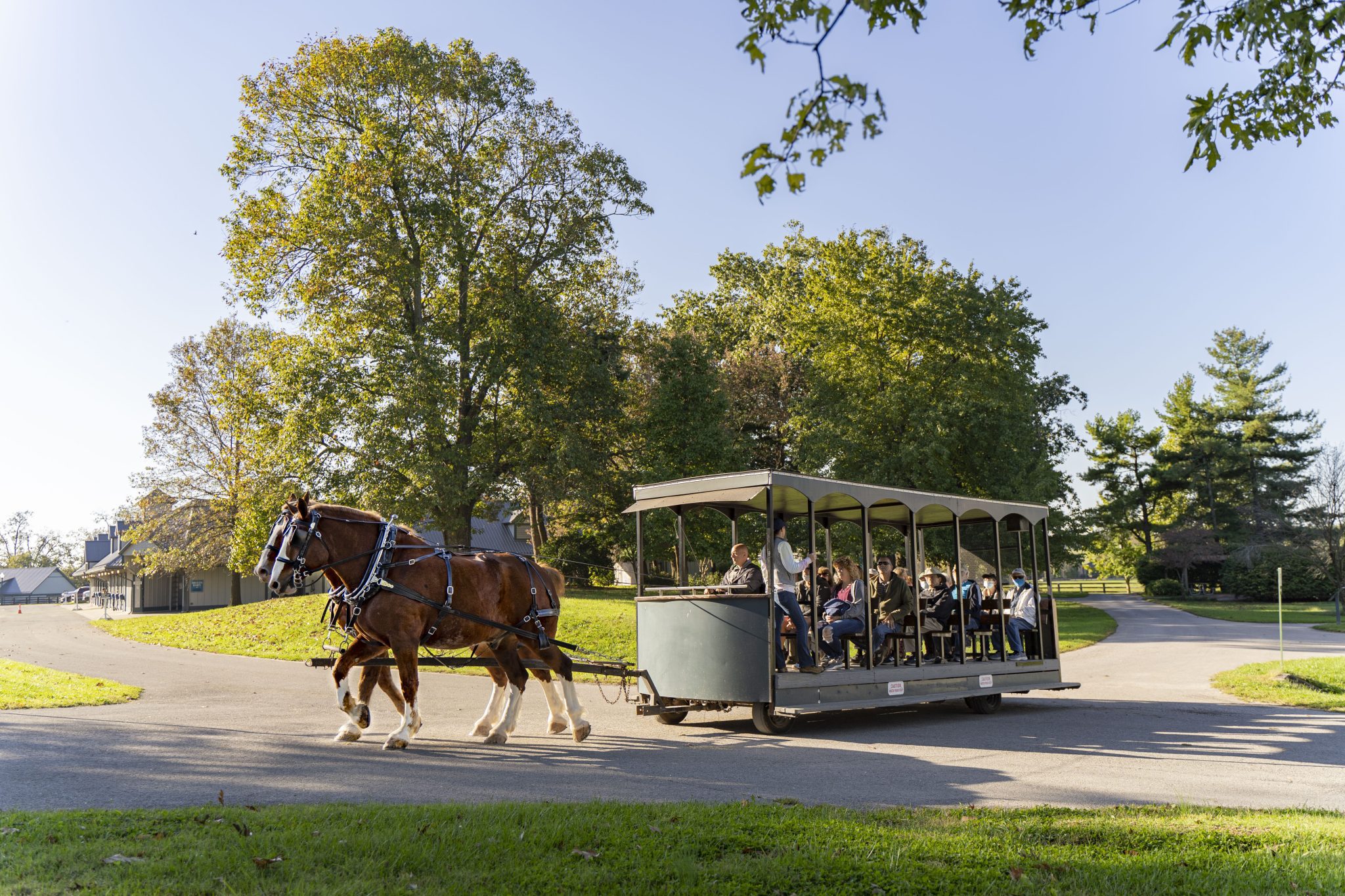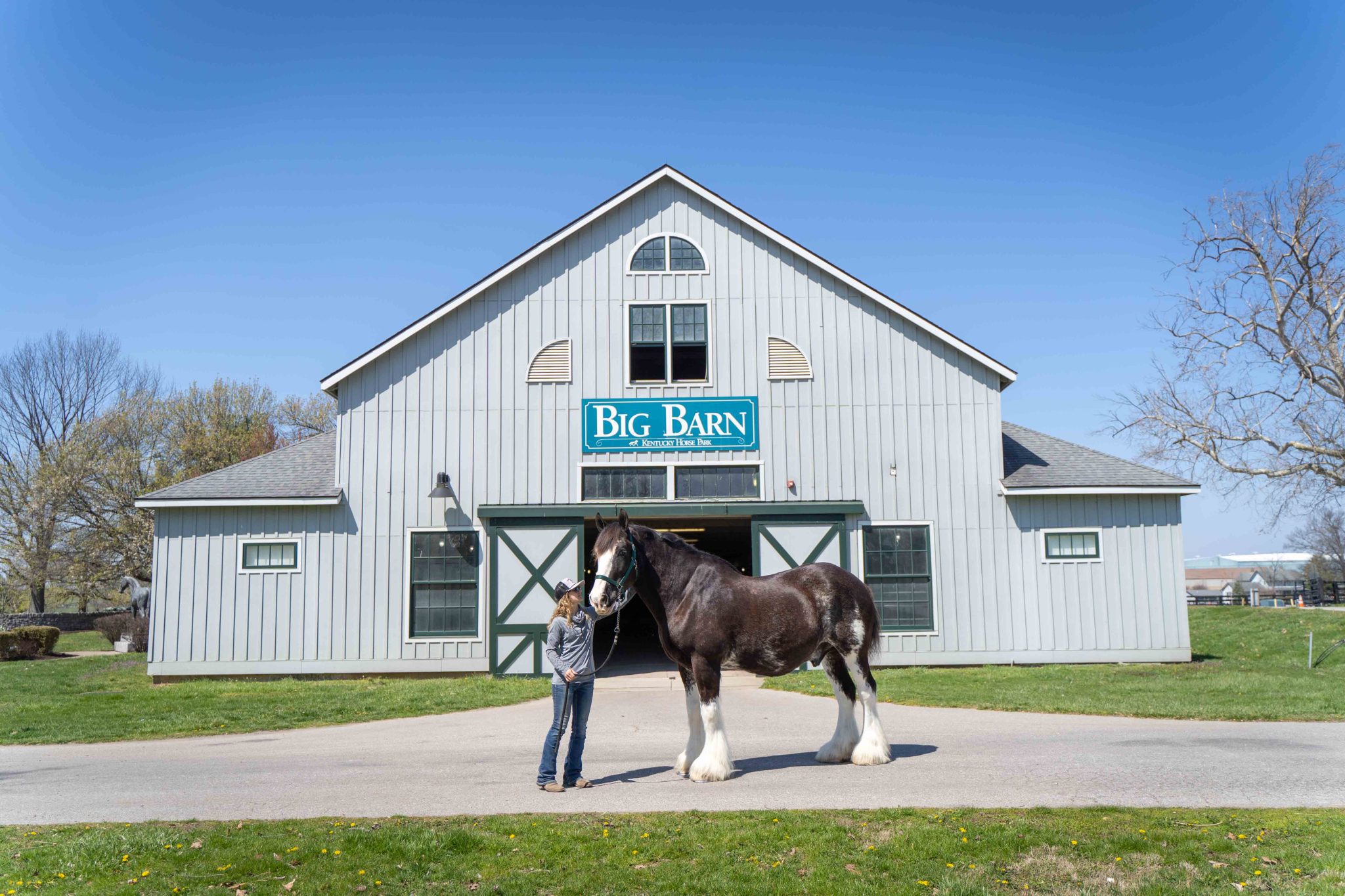
Big Barn & Trolley Tour
Meet the Largest Horses of the Park
Visit the draft horses in the Big Barn for a live demonstration and Meet & Greet session. This demonstration will cover a variety of information about the draft horses, including show preparation, harnessing, and breed history. The demonstration runs for approximately fifteen minutes, and questions are gladly accepted from the audience. Afterward, you are welcome to visit the draft horse being used in the day’s session and take pictures!

A Historical Tour of KHP
Visitors may tour the scenic Kentucky Horse Park grounds by trolley. Pulled daily by two of our beautiful draft horses throughout the summer season (weather permitting), this informative ten minute tour provides visitors a chance to learn more about the features, history, and current events of the Kentucky Horse Park.
*Note: The trolley station for the Horse Drawn Tour is located between the Kids Barn and the Mounted Police Barn. In the event of inclement weather, a tractor may be substituted to pull the trolley for the safety of our horses and visitors.
History of the Big Barn
The Big Barn is utilized to house our beautiful draft horses and special weekend guests, as well as various horses from the other equine departments at the park. Visitors are encouraged to visit this historic barn throughout the day to see the various breeds being groomed and harnessed in preparation for pulling the trolleys as well as to view the amazing carriages on display.
In 1893, John D. Creighton purchased the land now occupied by the Kentucky Horse Park. He renamed the property Ashland-Wilkes Farm, and was the first to raise solely Standardbred horses (harness horses) here. Creighton constructed the half-mile training track that now stands in the center of the park and the original two-thirds of the “Big Barn” in 1897.
Soon after, he found himself in debt and was forced to sell the farm. The property was purchased by neighboring Walnut Hall Farm, one of the nation’s premier breeders of harness horses early in the 20th century.


For the next two decades it is unknown exactly how the barn was used by Walnut Hall. However, in the 1920s, their magnificent 400-foot long yearling barn was destroyed by a fire. Turning disaster into opportunity, the “Big Barn” was enlarged to 463 feet in length and 74 feet in width, making it one of, if not the, largest horse barns in America.
It had been the custom of Walnut Hall to ship their yearlings to New York City each winter to be sold at the “Old Glory Horse Sales.” In the 1930s, Walnut Hall added an auctioneer’s stand and seating to the barn, and began holding sales on the premises in conjunction with the Grand Circuit race meet at Lexington’s Red Mile. These were the first Standardbred horse sales held in Kentucky and proved to be crucial in establishing the Bluegrass State as a major Standardbred breeding center.
When the Commonwealth of Kentucky purchased Walnut Hall Stud Farm in 1971 to be the site of the Kentucky Horse Park, the Big Barn was included in the sale. Over the next seven years the barn went through extensive renovations prior to the opening of the Park in 1978. By the turn of the 21st century, it had become obvious that severe problems with the barn’s original truss system could well jeopardize the barn’s survival.
In 2009, the Park was awarded Federal Transportation Enhancement funding to reinforce the barn’s trusses and to create a carriage museum and visitor center related to Iron Works Pike within the structure. Over the course of the project, approximately 18,000 bolts, nuts, and washers, 128 6×6 steel tube diagonal stall braces, 248 4×4 steel tube ‘y’ roof braces, 256 quarter inch thick steel plate wood joint reinforcements, and 654 eight inch steel channel or tube column brace reinforcements were used to shore up the barn’s truss system, thus saving this historic structure for future generations.
